Widespread increase in coastal Pacific Northwest hypoxia threatens marine life, scientists say
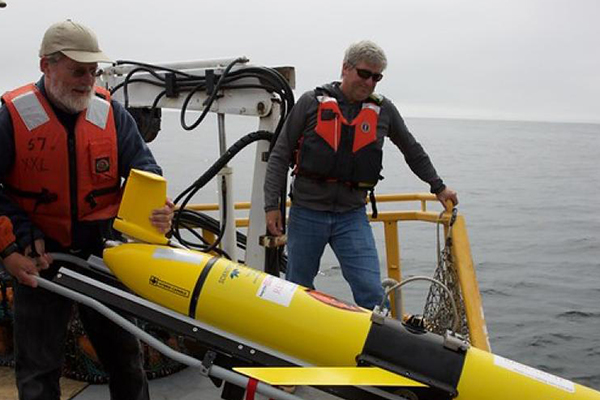
Low oxygen conditions that pose a significant threat to marine life are widespread and increasing in coastal Pacific Northwest ocean waters as the climate warms, a new study shows.
Researchers found that in 2021, more than half the continental shelf off the Pacific Northwest coast experienced the low-oxygen condition known as hypoxia.
“We’ve known that low-oxygen conditions are increasing based on single points of study in the past, but this confirms that these conditions are occurring across Pacific Northwest coastal waters,” said Jack Barth, the study’s lead author and an oceanography professor at Oregon State University. “The 2021 season was unusually strong compared to past years but with climate change, we are headed in a direction where this may be the norm.”
The new study, published in Nature Scientific Reports, is based on data collected by an unprecedented number of research vessels and autonomous underwater gliders that were collecting measurements in the ocean during the summer of 2021. The vast amount of data gave researchers a more complete and nuanced understanding of hypoxia’s severity and spatial distribution in the coastal waters of the northern California Current, said Barth.
“This picture has been needed for a long time by policymakers and fisheries managers who make decisions about ocean uses,” he said.
On average, nearly 50 percent of the continental shelf – an area the same size as Oregon’s Willamette Valley and slightly smaller than the state of Connecticut – experienced hypoxia during the summer upwelling period in 2021.
Wind-driven upwelling brings nutrient-rich water to the ocean’s surface, supporting a thriving upper-ocean food web. However, this process also pushes low-oxygen water from the depths toward the coast. Oxygen levels near the seafloor decrease further due to the decay of phytoplankton. When oxygen levels drop significantly, marine organisms, including economically and culturally important Dungeness crabs, struggle to move to oxygen-rich areas and die from lack of oxygen.
NOAA confirms link between snow crab decline and marine heatwave
The coastal ocean data revealed varying levels of hypoxia in different areas. For instance, the southern Oregon coast experienced less hypoxia compared to other regions. Heceta Bank, located about 35 miles off Florence and renowned for its rich marine life, showed greater resilience to hypoxic conditions. However, the area closer to Cape Perpetua, inland from Heceta Bank and with poorer water circulation, was prone to hypoxia.
Mapping the different levels of low oxygen in coastal areas helped scientists understand how the shape of the ocean floor and its movement affect each other, Barth explained.
“I was amazed when I saw the maps,” he said. “It really corroborates our understanding of how underwater geography affects hypoxia.”
Comparing maps from previous years reveals a clear pattern of increasing hypoxia over time. From 1950 to 1980, hypoxia was nearly nonexistent at 2 percent, but it rose to approximately 24 percent from 2009 to 2018, and further to 56 percent in 2021. This trend remains consistent even when considering year-to-year fluctuations, according to Barth. Researchers are currently creating maps for 2022 and 2023 based on the 2021 data. These findings offer policymakers and fisheries managers valuable tools for decision-making as ocean conditions evolve, Barth said.
“On land, we know where the grassland is, where the forests are, where the rivers run so we can sustainably use those resources. If we don’t have that kind of understanding of the ocean, how do we make plans for sustainable use of the ocean?” he said. “When we think about all the different uses of the ocean, from fisheries to marine reserves, and impacts such as heat waves and renewable energy development, we can manage all of those things better if we understand the environmental situation.”
The study also highlights the need for regular monitoring and mapping of hypoxia along the Pacific Northwest coast as conditions continue to change, Barth said.
“This effort is a demonstration of what we’re capable of doing if we coordinate our efforts,” he said. “Now that we have done this once and understand some of the key geographic features, we can target our sampling to best monitor these areas over time.”
Now that you've reached the end of the article ...
… please consider supporting GSA’s mission to advance responsible seafood practices through education, advocacy and third-party assurances. The Advocate aims to document the evolution of responsible seafood practices and share the expansive knowledge of our vast network of contributors.
By becoming a Global Seafood Alliance member, you’re ensuring that all of the pre-competitive work we do through member benefits, resources and events can continue. Individual membership costs just $50 a year.
Not a GSA member? Join us.
Author
Tagged With
Related Posts
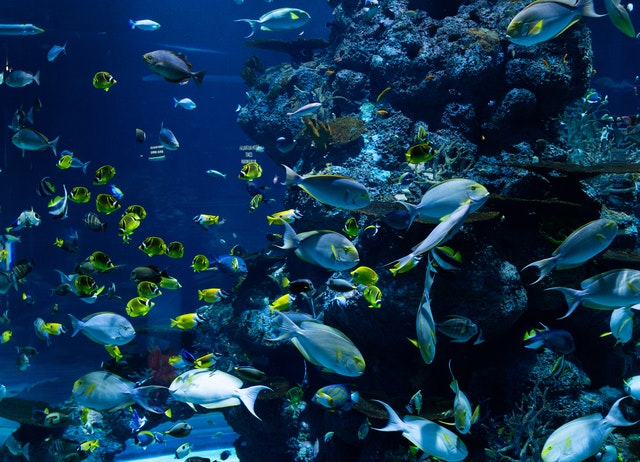
Health & Welfare
With warming waters, will fish suffer from oxygen deprivation?
A new study has found that larger fishes are more likely to experience oxygen deficiency in warming water than smaller species.
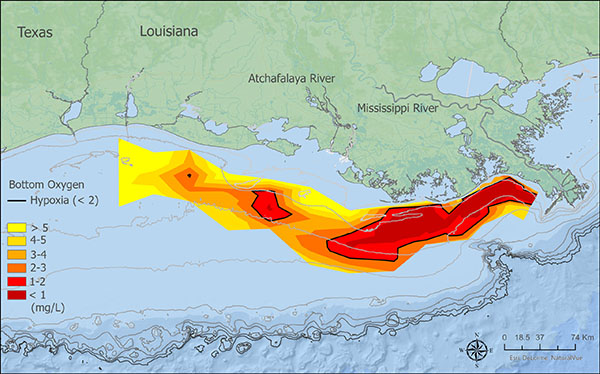
Responsibility
Gulf of Mexico ‘dead zone’ measures below average this year
NOAA said that this year's Gulf of Mexico “dead zone” is smaller than expected, with low river discharge identified as a contributing factor.
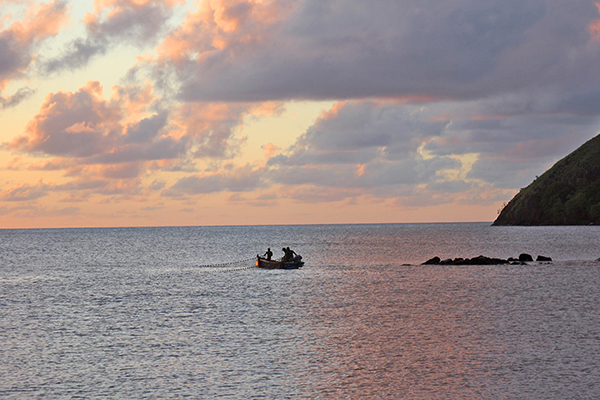
Fisheries
Study: Climate change is likely ‘suffocating’ the world’s fisheries
A new study indicates the ocean is losing oxygen due to climate change, greatly affecting fisheries and other marine resources.
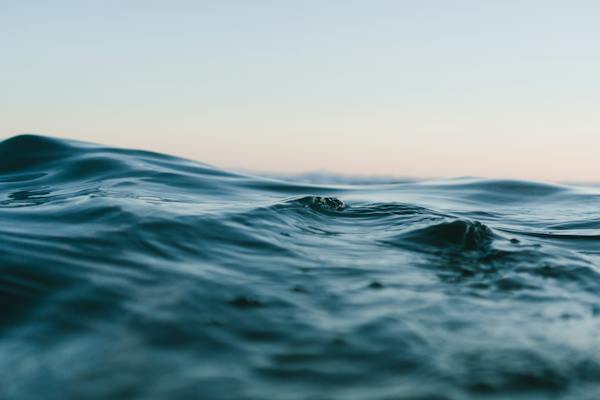
Responsibility
High ocean temperatures helped make 2023 the hottest year ever recorded
A new study found ocean temperatures were “off-the-chart” in 2023, causing more intense weather patterns and impacting marine life.



